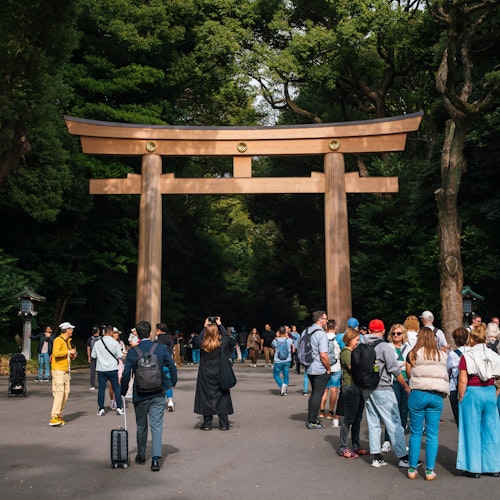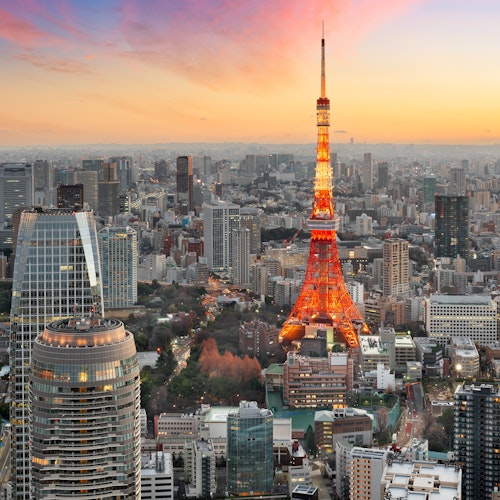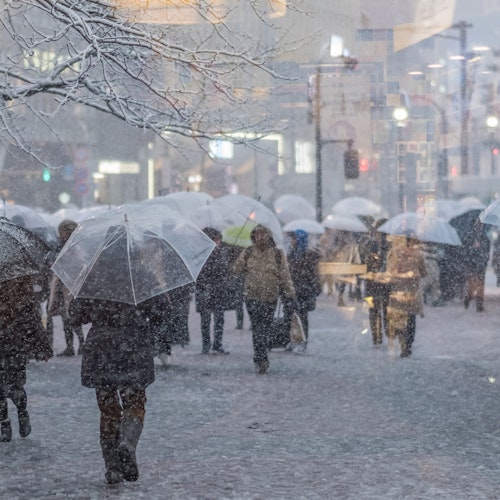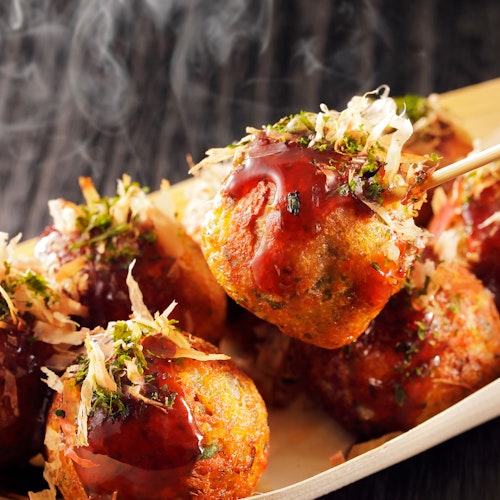
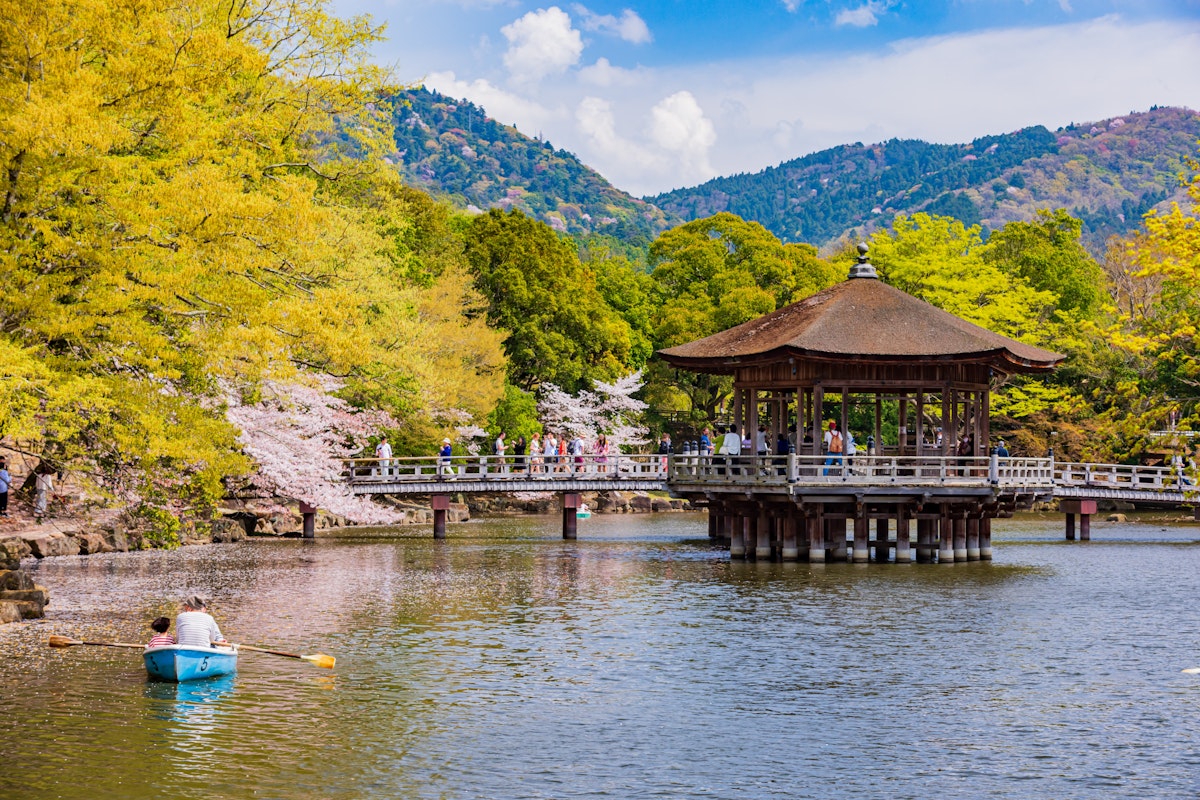
Tokyo is an incredible city, but sometimes you need to escape the urban bustle and explore what lies beyond. Whether you're craving mountain air, coastal beauty, or cultural immersion, weekend trips from Tokyo offer the perfect opportunity to discover Japan's diverse landscapes and rich heritage without straying too far from the capital.
Here are 10 of the best weekend getaways that will make you fall even more in love with Japan.
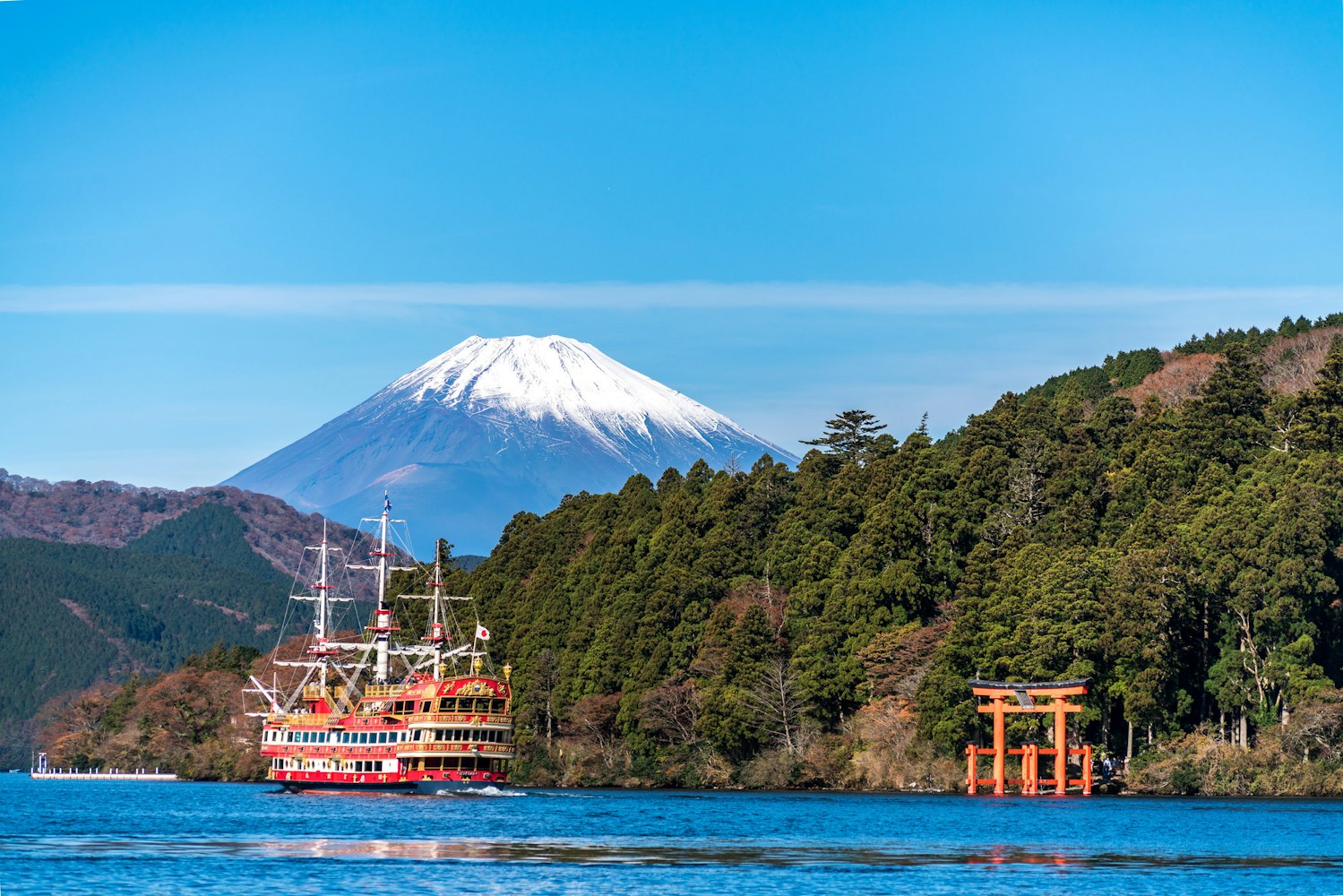
Mount Fuji stands as Japan's most iconic symbol, and Hakone offers the perfect base for experiencing it. This overnight trip from Tokyo combines natural hot springs, stunning lake views, and that picture-perfect mountain backdrop you've seen in countless photos.
The Hakone area features traditional ryokan inns where you can soak in onsen baths while gazing at Mount Fuji. The Hakone Ropeway gives you aerial views across the Owakudani Valley, where volcanic activity still bubbles beneath the surface. Lake Ashi provides another perspective of the mountain, especially beautiful during early morning hours when the water mirrors the peak perfectly.
Many visitors join Mount Fuji day tours that include stops at the Fifth Station, where you can stand halfway up the mountain and feel its massive presence. These tours often combine visits to Hakone's key attractions, making it easy to experience everything in one weekend. The Hakone Free Pass offers unlimited travel on most transportation in the area, including the famous pirate ships on Lake Ashi.
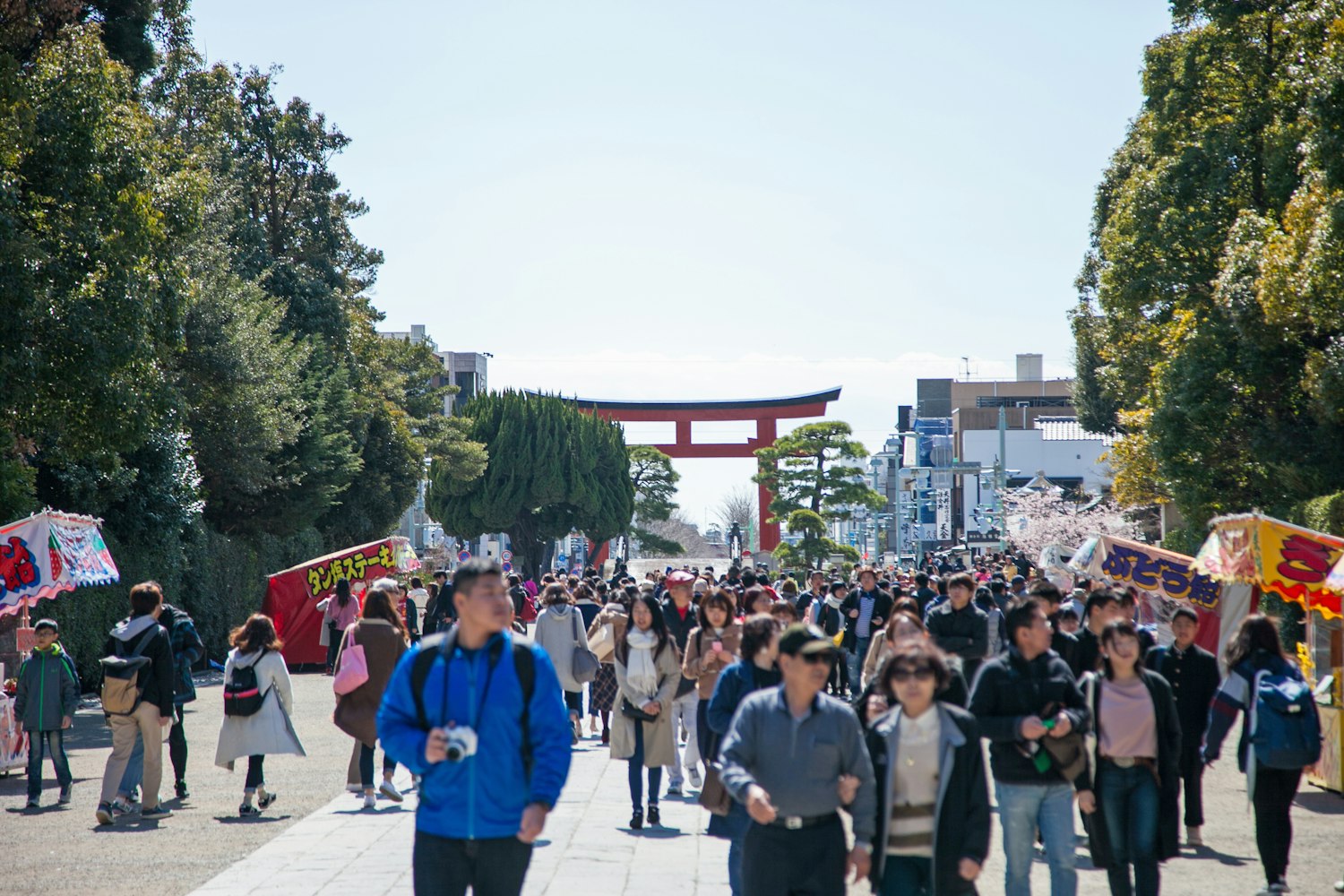
Kamakura brings together beach vibes and historical treasures in one-day trip from Tokyo. This coastal town served as Japan's political center during the medieval period, and the legacy remains visible in its many temples and the massive bronze Buddha everyone comes to see.
The Great Buddha of Kamakura sits outside in the open air, a 13-meter tall bronze statue that has weathered earthquakes and tsunamis since 1252. You can actually walk inside the statue for a small fee, which gives a unique perspective on how it was constructed. Hasedera Temple sits on a hillside overlooking the ocean, with thousands of small Jizo statues lining the paths.
Kamakura's beaches offer a completely different atmosphere. Yuigahama and Zaimokuza beaches fill with surfers and sunbathers during the summer months. The Enoden railway connects all the beach towns, running right along the coast in some sections where you can almost touch the ocean from the train window.
Joining a Kamakura and Enoshima tour lets you cover both areas efficiently, including the island of Enoshima with its shrine, caves, and panoramic views. Many tours also stop at Komachi Street, where traditional shops sell local snacks and crafts. The combination of culture, nature, and seaside relaxation makes this perfect for a Tokyo weekend trip when you want variety without traveling far.
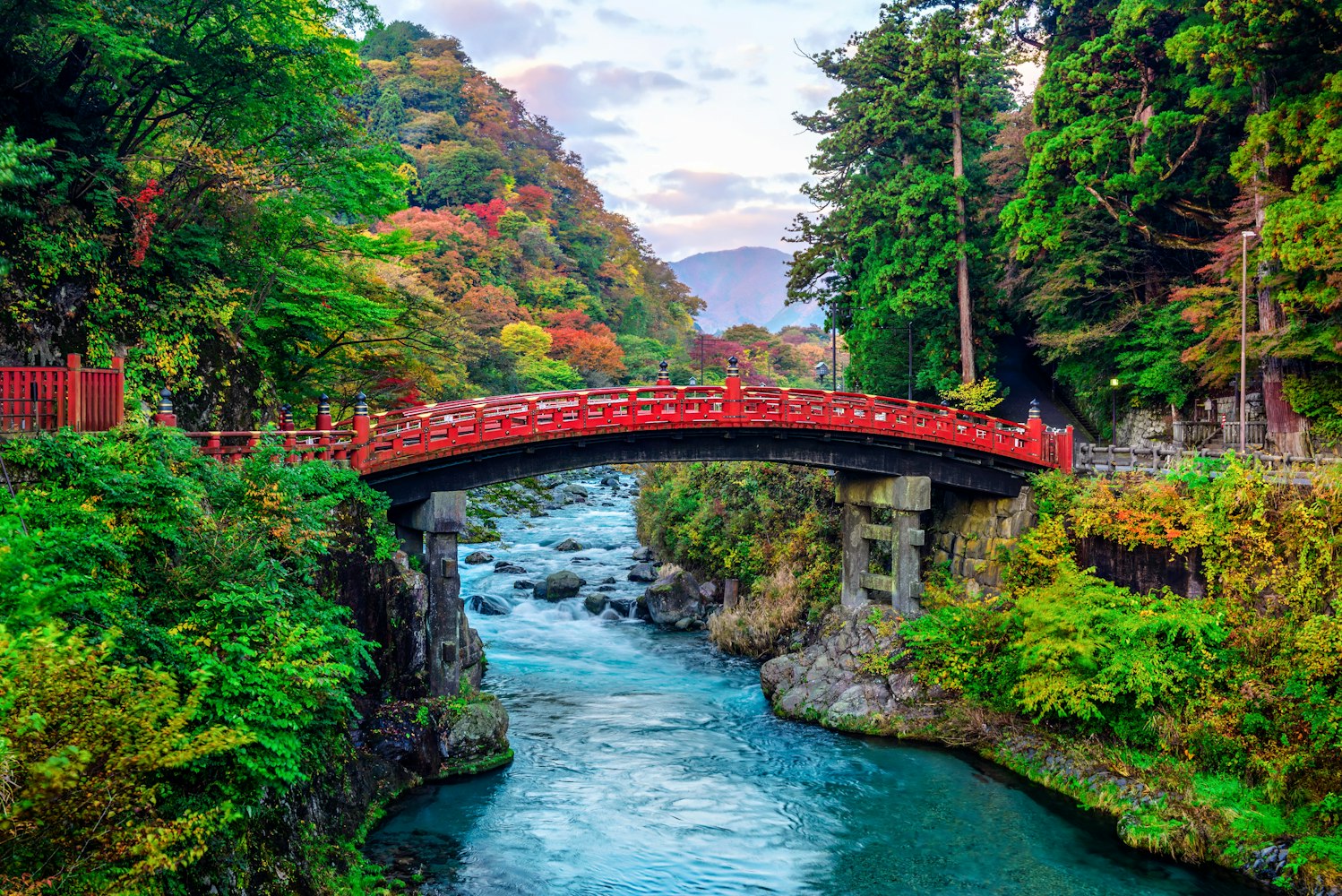
Nikko packs an incredible amount of history and nature into one compact area just two hours north of Tokyo. This mountain town became a UNESCO World Heritage site thanks to its stunning shrines and temples, but the surrounding national park offers equally impressive natural wonders.
Toshogu Shrine dazzles visitors with its ornate gold decorations and intricate carvings. The famous "see no evil, hear no evil, speak no evil" monkeys live here, carved into one of the shrine buildings. Nearby, Rinnoji Temple and Futarasan Shrine complete the sacred trio that makes Nikko special.
Beyond the cultural sites, Nikko National Park spreads across mountains, waterfalls, and lakes. Kegon Falls drops 97 meters into a pool below, creating a thunderous display, especially impressive after rainfall. Lake Chuzenji sits peacefully at the base of Mount Nantai, offering boat rides and hiking trails around its perimeter.
The Nikko Toshogu Shrine tour typically covers the main cultural highlights in a day, but staying overnight lets you explore the natural areas without rushing. Autumn transforms Nikko into an explosion of red and gold leaves, making it one of the most popular Tokyo weekend trip destinations during October and November.
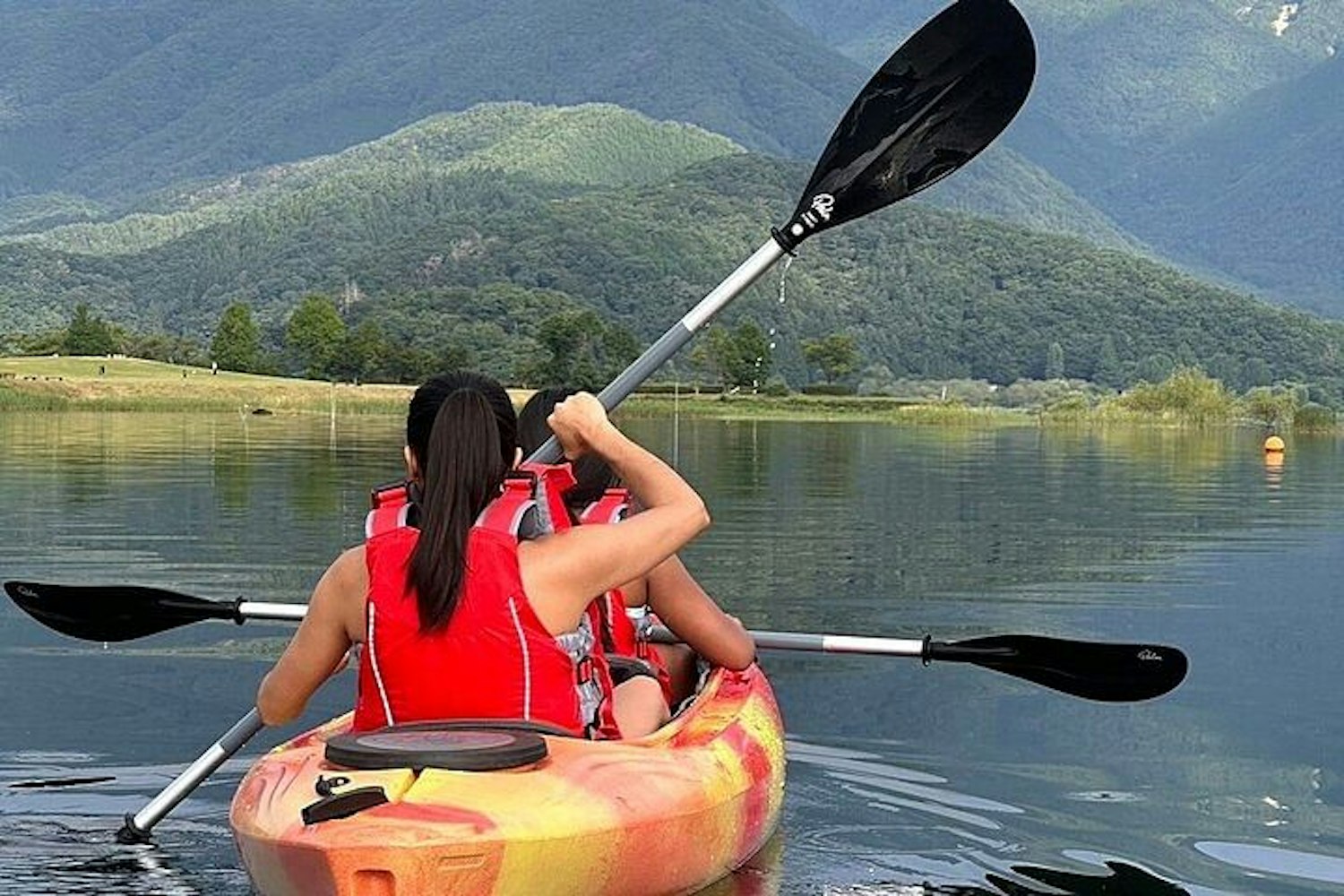
Lake Kawaguchiko offers possibly the best views of Mount Fuji from any location. This lake town sits at the mountain's northern base, where the reflection of Fuji in the calm water creates those iconic images you see everywhere. Spending a weekend here means waking up to that view right outside your window.
The lake area provides different activities depending on the season. Summer brings hiking opportunities on the lower slopes and boat rides across the lake. Autumn covers the shoreline in brilliant foliage, with the Maple Corridor becoming particularly famous during November. Winter can bring snow to the area, making Fuji even more dramatic against blue skies. Spring sees cherry blossoms frame the mountain perfectly during late April.
Several museums dot the area, including the Kubota Itchiku Art Museum, showcasing stunning kimono art, and the Kawaguchiko Music Forest Museum with its collection of automatic musical instruments. The Kachi Kachi Ropeway carries you up Mount Tenjo for panoramic views of the entire Fuji Five Lakes region.
Many visitors book a Lake Kawaguchiko and Mount Fuji tour that includes transportation from Tokyo plus stops at key viewpoints. The Oishi Park along the northern shore provides fantastic photo opportunities, especially during the lavender season in June and July. Staying overnight at one of the lakeside hotels or ryokan means you can catch both sunset and sunrise over Fuji, something day trippers miss entirely.
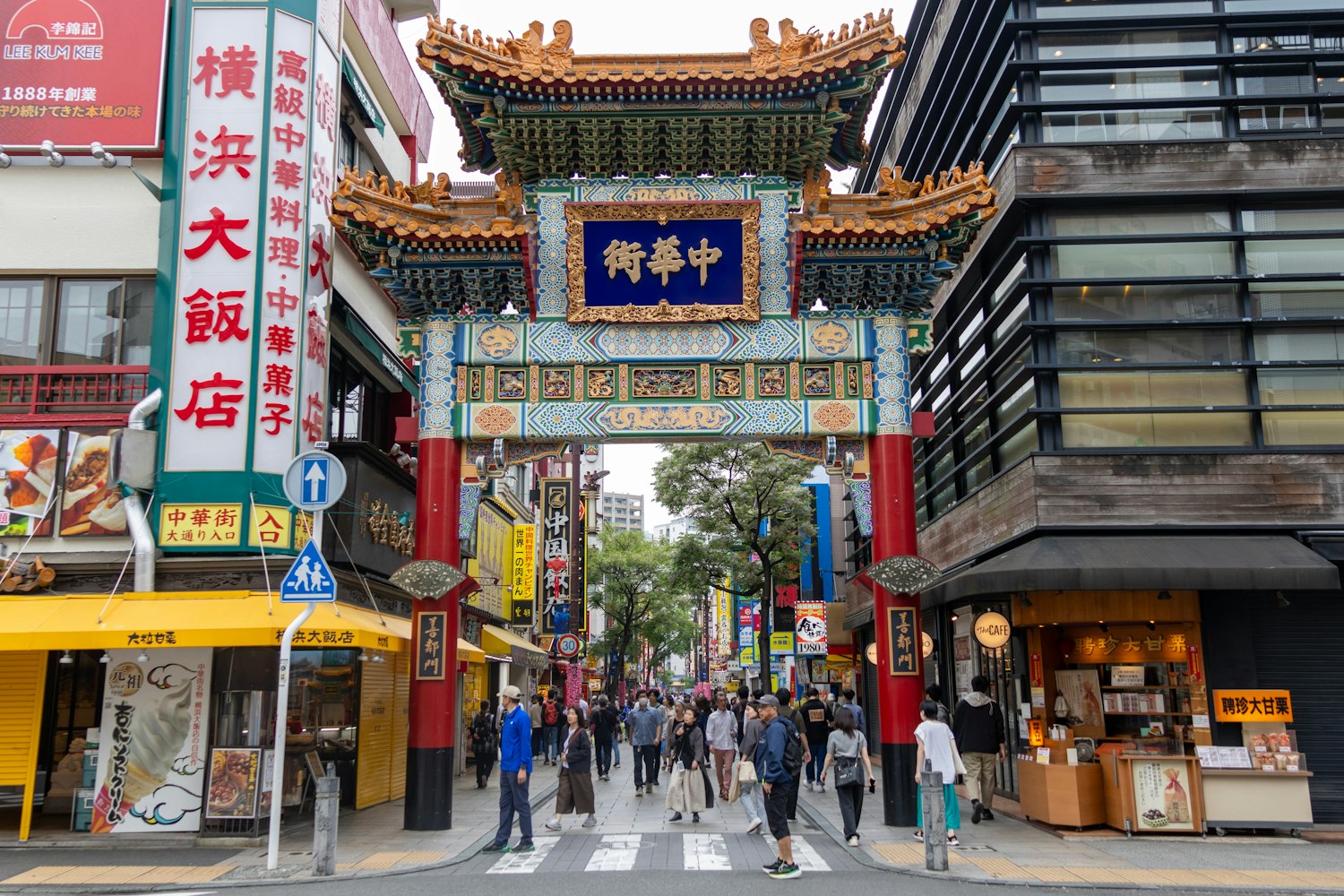
Yokohama sits so close to Tokyo that many people question whether it counts as a weekend getaway, but this port city has its own distinct character worth exploring. Japan's second-largest city mixes international influences with Japanese tradition, creating neighborhoods that feel completely different from Tokyo.
Minato Mirai 21 represents Yokohama's modern face, with futuristic buildings, shopping centers, and the famous Cosmo Clock 21 Ferris wheel lighting up the waterfront. The Yokohama Landmark Tower offers views from 273 meters up, while the Red Brick Warehouses house restaurants and shops in beautifully preserved historical buildings.
Chinatown sprawls across several blocks, serving as Japan's largest Chinese community and a paradise for food lovers. The smell of steamed dumplings and roasted meat fills the air, with hundreds of restaurants competing for customers. Nearby, Yamashita Park stretches along the waterfront, perfect for evening strolls with ships passing in the harbor.
The Cup Noodles Museum lets you design your own instant ramen flavor, a surprisingly fun experience for all ages. Sankei-en Garden provides peaceful traditional landscapes with historic buildings relocated from across Japan. A Yokohama city tour typically covers these highlights efficiently, though spending the night lets you experience the harbor lights and enjoy dinner in Chinatown without worrying about last trains back to Tokyo.
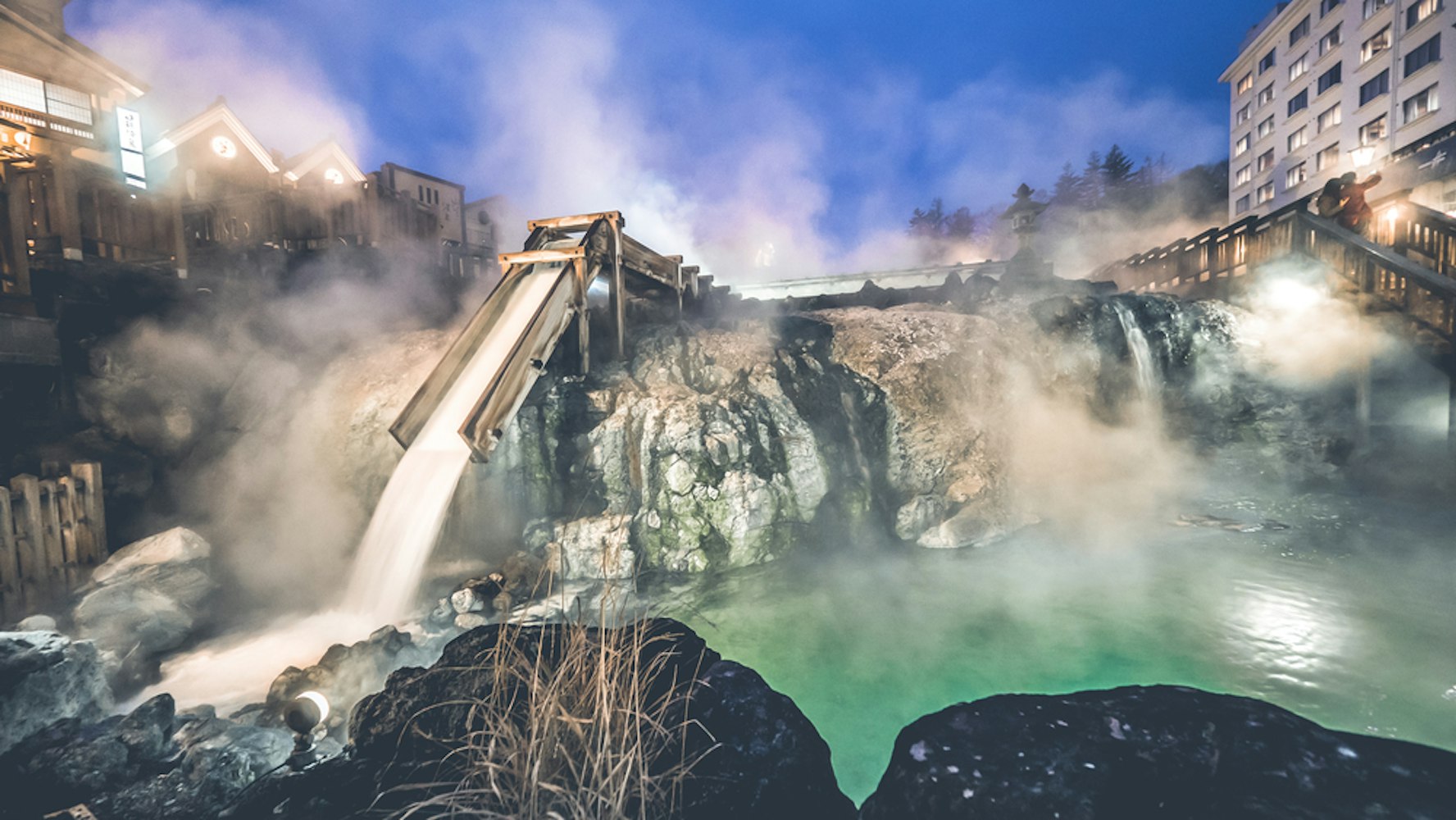
Kusatsu Onsen ranks among Japan's most famous hot spring resorts, known for having some of the highest quality mineral water in the country. This mountain town in Gunma Prefecture revolves entirely around the healing powers of its natural hot springs, making it the ultimate relaxation destination for your weekend getaway.
The Yubatake, or "hot water field," sits at the town center, where 4,000 liters of hot spring water flow every minute. Wooden channels cool the naturally scalding water before it reaches the public baths. Steam rises constantly from this area, creating an atmospheric scene especially beautiful after dark when lights illuminate the channels.
Multiple free public baths scatter throughout the town, though they maintain seriously hot temperatures that even Japanese bathers find challenging. The Sainokawara Rotenburo offers a massive outdoor bath where you can soak while surrounded by mountain scenery. Many ryokan have their own private baths where you can control the temperature more easily.
Beyond bathing, Kusatsu offers skiing in winter at nearby resorts and hiking during warmer months. The traditional yumomi show demonstrates how locals historically cooled the water by stirring it with large wooden paddles while singing folk songs.
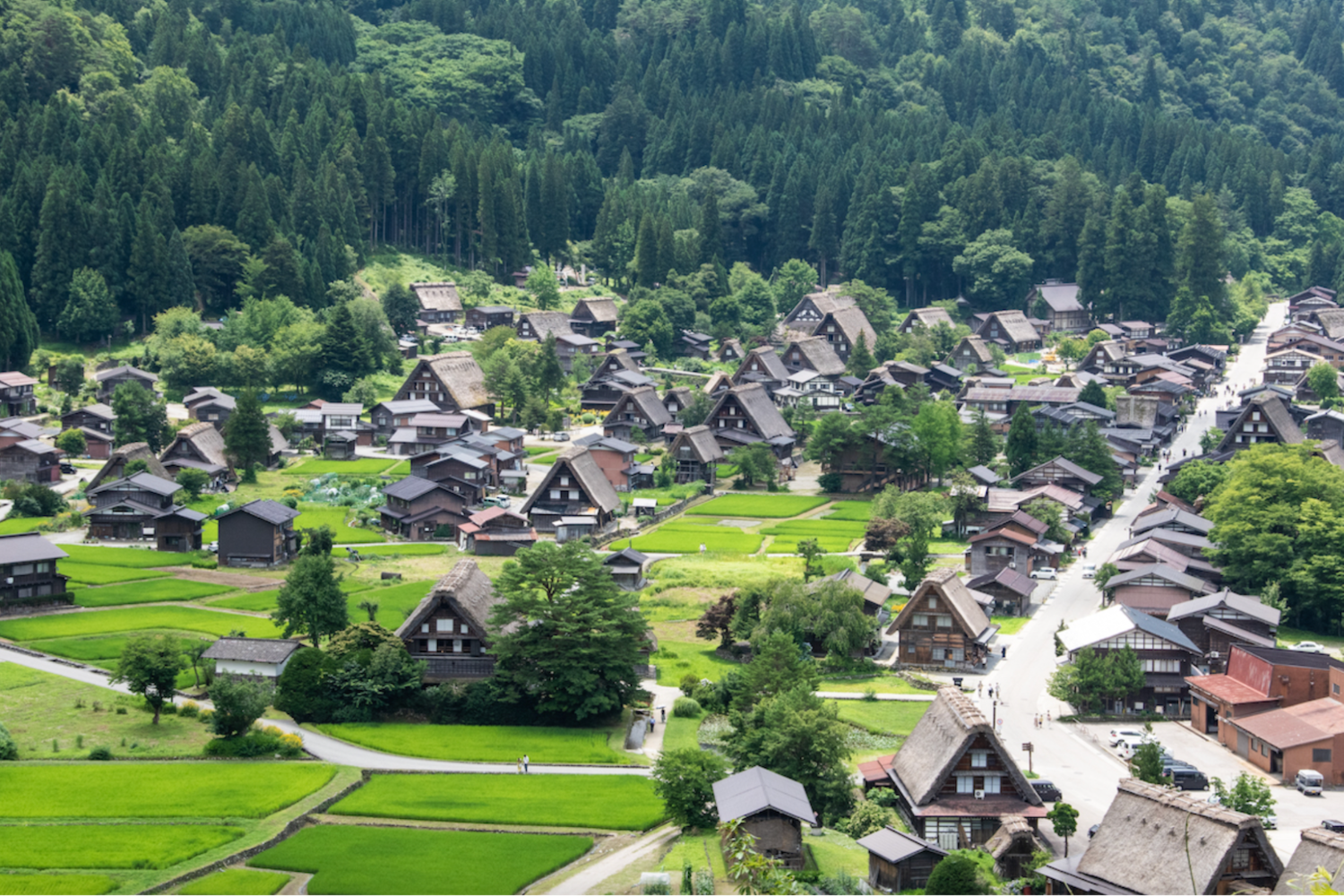
Takayama preserves Edo-period streets better than almost anywhere in Japan, while nearby Shirakawa-go features those famous thatched-roof farmhouses that look like they came from a fairy tale. Together, they make an unforgettable overnight trip from Tokyo, though getting there requires either a long train journey or joining an organized tour.
Takayama's old town transports you back centuries with wooden merchant houses, sake breweries, and morning markets selling local produce and crafts. The town feels especially authentic because it avoided major development and war damage. Small museums occupy many of the traditional buildings, showcasing everything from local history to merchant life during the Edo period.
Shirakawa-go's gassho-zukuri farmhouses use a unique architectural style with steep thatched roofs designed to handle heavy snow. The village sits in a mountain valley where communities developed in isolation, creating distinct cultural traditions. Several farmhouses now operate as guesthouses where you can experience traditional rural life, sleeping on futon bedding and eating home-cooked meals with your hosts.
Most visitors join a Takayama and Shirakawa-go tour that handles all the transportation logistics, since reaching these mountain areas requires multiple train transfers or several hours of driving. The tour typically includes both destinations in a well-organized itinerary, with free time to explore each location.
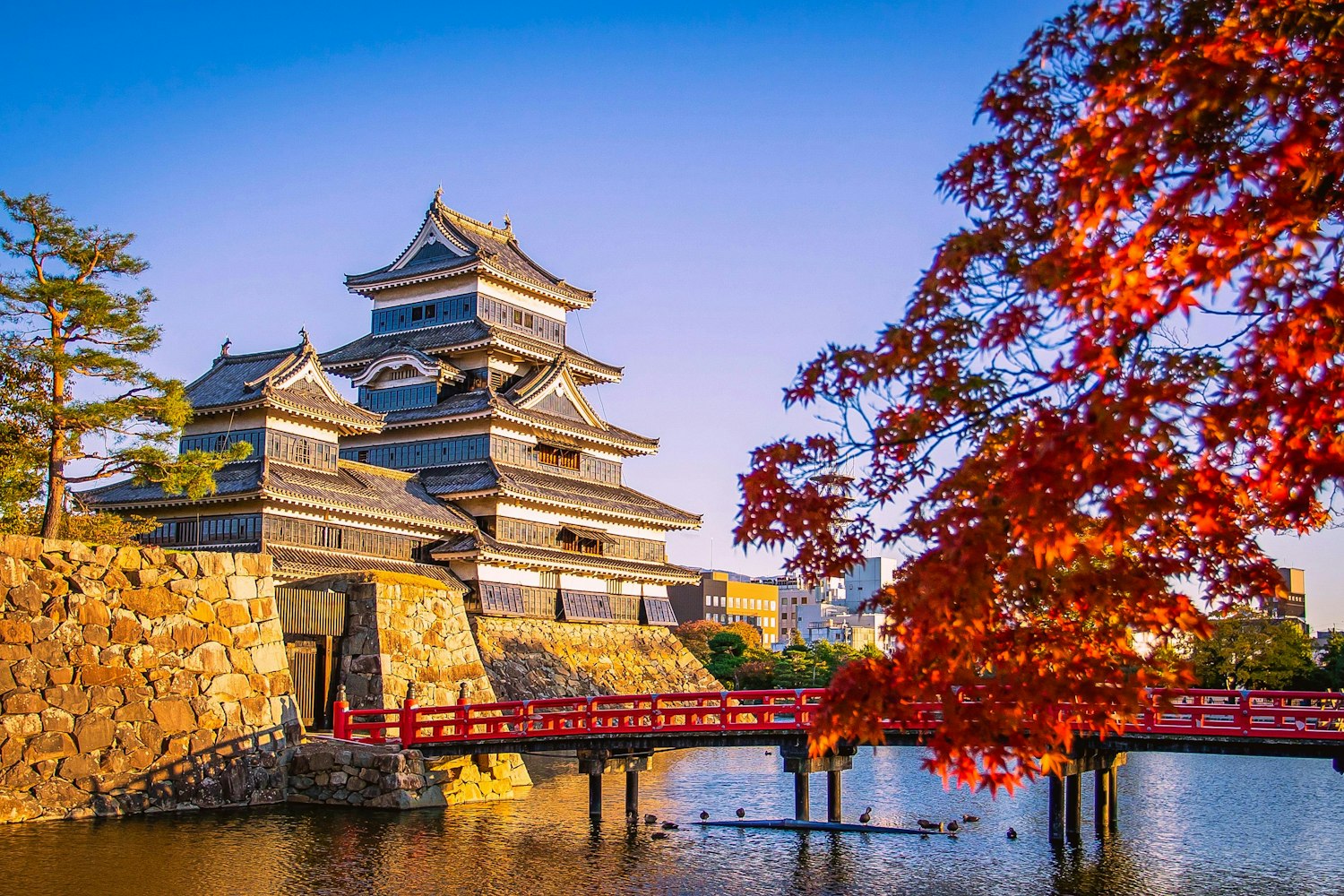
Matsumoto Castle stands as one of Japan's most beautiful original castles, with black walls earning it the nickname "Crow Castle." The surrounding city serves as a gateway to the Japanese Alps, where mountain scenery rivals anything in Europe.
The castle dates from the 16th century and maintains its original wooden interior with steep stairs connecting the six floors. The top floor provides views across the city to the mountains beyond. Unlike many reconstructed castles in Japan, Matsumoto feels authentically historical with creaking floorboards and narrow defensive positions built into the structure.
Nakamachi Street near the castle preserves white-walled warehouses now converted into craft shops, galleries, and cafes. The atmosphere feels relaxed compared to Tokyo, with locals still using bicycles as their main transportation. The area produces excellent wasabi, and several restaurants specialize in dishes featuring this local crop.
The nearby Kamikochi valley offers some of Japan's most spectacular mountain scenery, accessible from late April through mid-November. Crystal-clear rivers flow through the valley floor, with peaks rising dramatically on both sides.
Hiking trails range from easy walks along the river to challenging mountain climbs. A Matsumoto and Japanese Alps tour typically includes the castle and surrounding city, with options to add Kamikochi during the season when the road stays open.
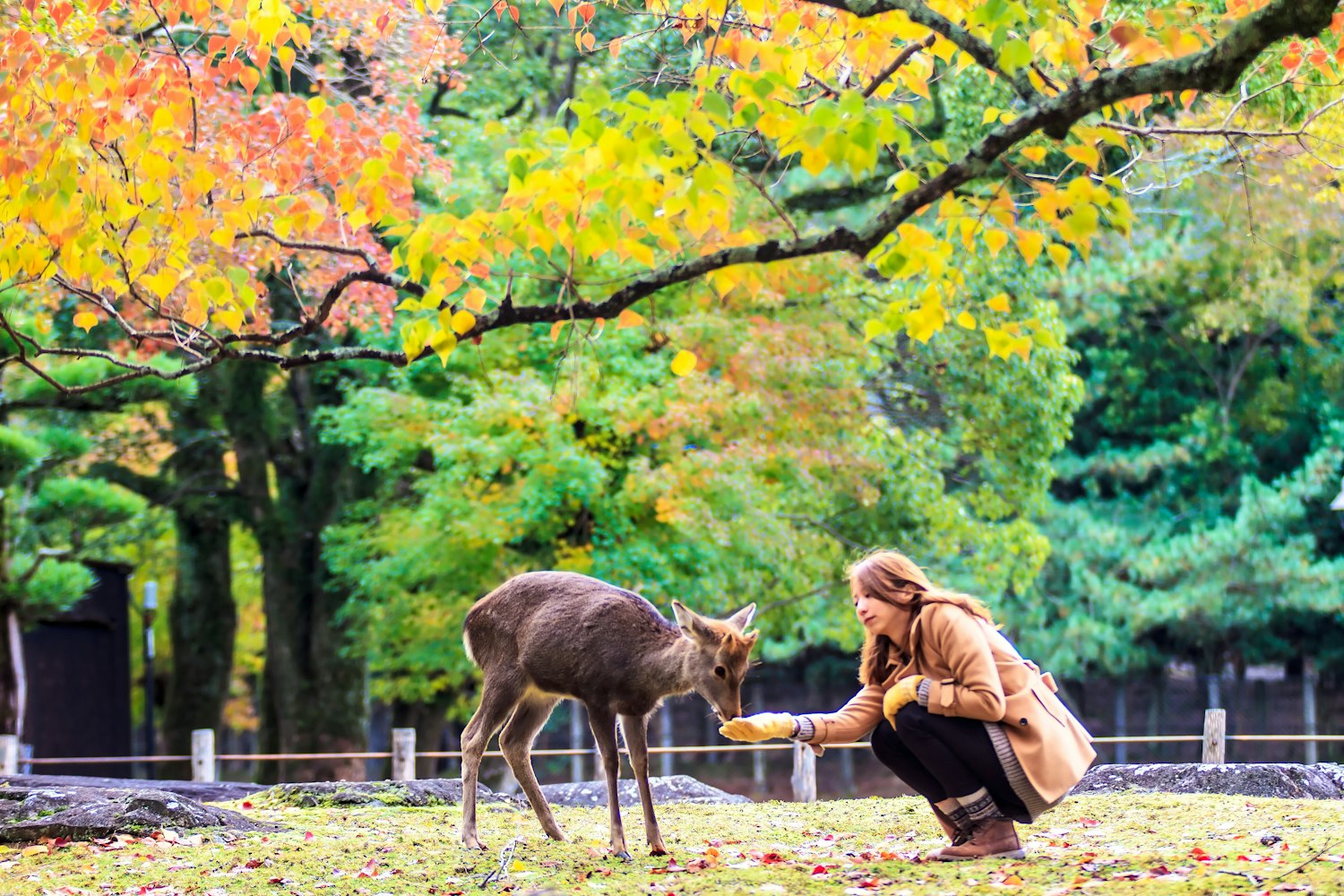
Nara served as Japan's capital before Kyoto, and the city preserves some of the country's oldest and most impressive temples. The famous deer that roam freely through Nara Park have become symbols of the city, approaching visitors to request the special deer crackers sold throughout the park. This makes an excellent overnight trip from Tokyo when you want to experience historical Japan.
Todaiji Temple houses a bronze Buddha so massive that the building had to be constructed around it. At 15 meters tall, the statue impresses everyone who enters the hall, and you can walk around it to appreciate the details from all angles. The temple complex includes beautiful gates and gardens, with the Nigatsu-do hall providing elevated views across the park.
Kasuga Taisha Shrine features thousands of bronze and stone lanterns lining the paths, all lit during special festivals twice yearly. The deer in Nara Park are considered sacred messengers of the shrine's deities, which explains why they receive such protection and care. The park itself covers a huge area with multiple temples and peaceful walking paths.
Many people visit Nara as a day trip, but staying overnight lets you experience the park early morning or evening when crowds disappear and the deer become more relaxed. A Nara day tour from Tokyo typically includes the main temples and park, plus transportation via bullet train making the journey quick and comfortable.
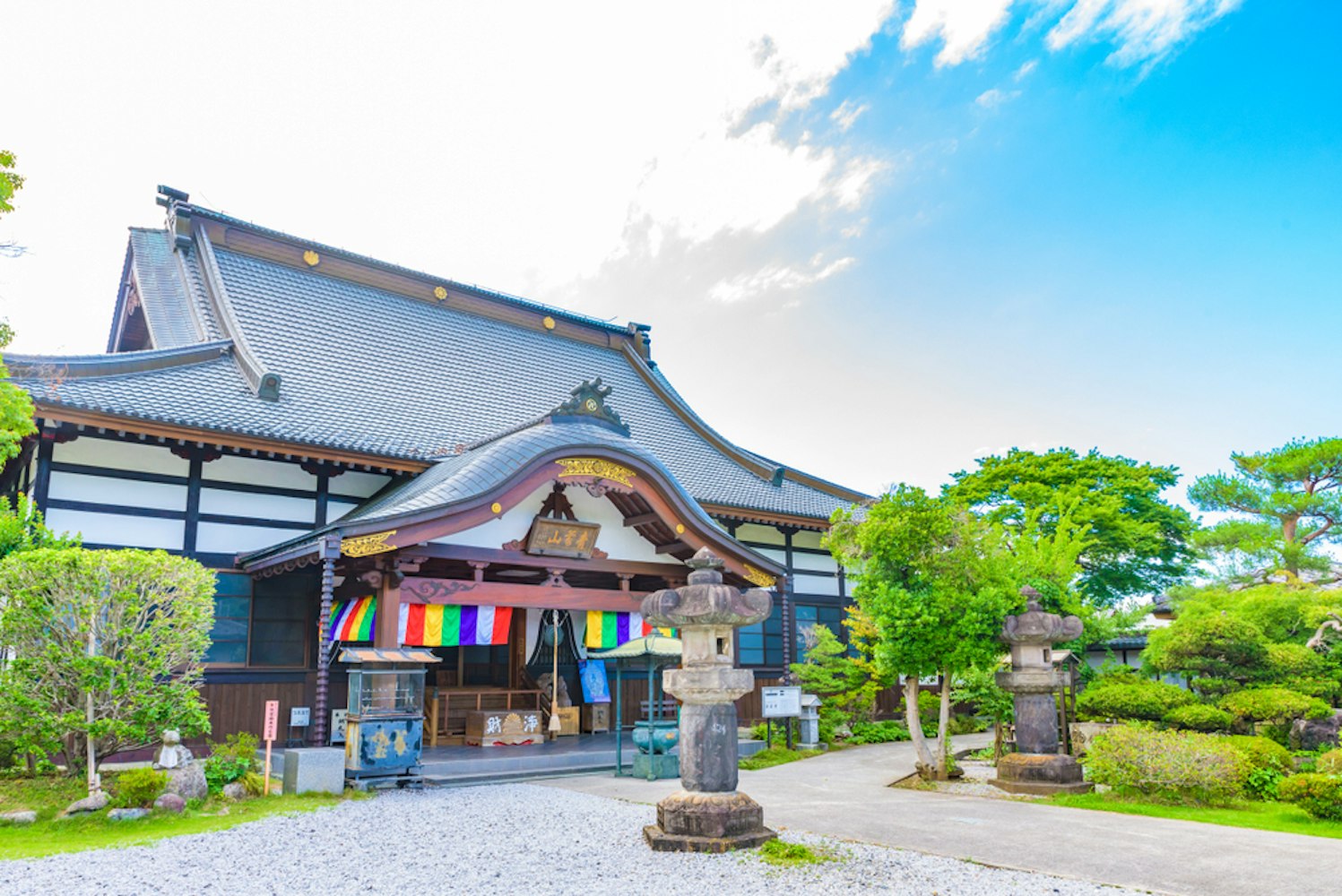
Chichibu provides the quickest mountain escape from Tokyo, sitting just 90 minutes away in Saitama Prefecture. This rural area offers temples, shrines, mountain scenery, and local culture without the tourist crowds found at more famous destinations.
The Chichibu Night Festival, held every December, ranks among Japan's three greatest festivals with elaborate floats and fireworks. Throughout the year, visitors can explore the 34 temples of the Chichibu Pilgrimage route, though most people visit just a few highlights rather than completing the full circuit. Mitsumine Shrine sits high in the mountains surrounded by ancient cedar trees, creating a mystical atmosphere.
Nagatoro, within the Chichibu region, offers river rafting through a limestone gorge with layered rock formations. The boat rides provide exciting rapids in a beautiful natural setting. Autumn transforms the area into a blaze of red maples and golden ginkgo trees. Local sake breweries produce excellent rice wine using pure mountain water, and many offer tastings and tours.
These weekend trips from Tokyo showcase the incredible diversity of Japan—from sacred mountains and ancient temples to pristine beaches and modern cities. Each destination offers its own unique character and unforgettable experiences. Whether you have just two days or can stretch your escape to three or four, these getaways provide the perfect balance of adventure, culture, and relaxation.
So pack your bags, grab your camera, and discover the amazing destinations waiting just beyond Tokyo. Your next adventure is closer than you think!
